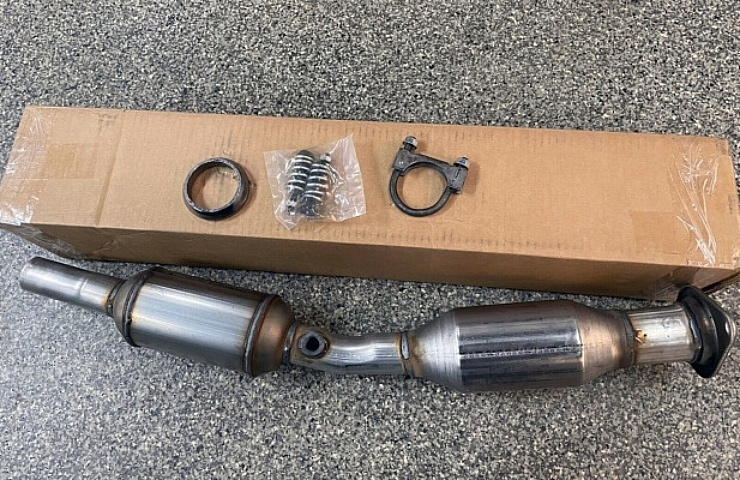Contents
Catalytic converters have been used for vehicle emission controls since the 1970s. They play a vital role in reducing toxic pollutants in exhaust gas. Catalytic converters usually work in the background. But if you encounter a problem, an excellent first step is a diy catalytic converter cleaning.
Shop now for a catalytic converter cleanerMotorists should know that catalytic converters can cause your “Check Engine” light to flash. And lately, there has been a spike in thefts of catalytic converters.
Read this: Protect Your Catalytic Converter with a Shield or Lock.
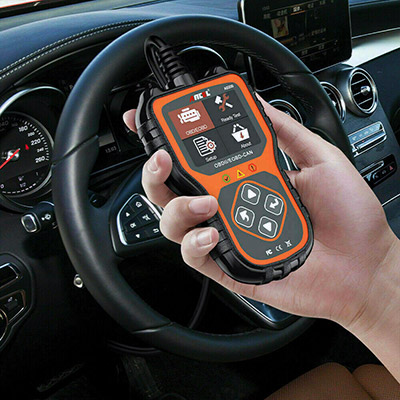
A code reader can reveal what is causing a check engine light.
What Does a Catalytic Converter Do?
The catalytic converter is a small chamber that converts noxious engine exhaust into less harmful fumes. The device is positioned between the engine and the muffler.
The catalytic converter consists of a substrate that looks like a metallic honeycomb. A coat of silica covers the substrate to expand the surface area. Oxides are added to promote oxygen storage during the conversion process.
The catalyst combines rare precious metals, including platinum, palladium, and rhodium. When the metals get hot, they cause a change in the gases’ chemical composition. Oxides of nitrogen are reduced to nitrogen. Simultaneously, hydrocarbons and carbon monoxide are oxidized and converted to carbon dioxide.
This process became more effective after 1981 when “three-way” converters were introduced.
Catalytic converters are partly responsible for the shift away from leaded gasoline, which prevents catalytic converters from doing their job.
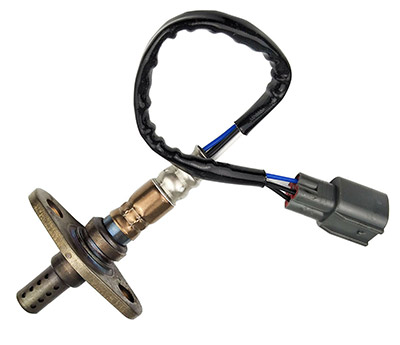
O2 sensors monitor the effectiveness of the catalytic converter.
Catalytic Converters and Engine Codes
A functioning catalytic converter is critical to reducing emissions. So automakers developed a series of controls and sensors to monitor its performance.
The most well-known are the O2 sensors used before and after the air stream involving the catalytic converter. Fortunately, O2 sensors are easy to replace.
Read this: Easy DIY Project: Replace an Oxygen Sensor.
Other auto parts used to maintain converters include air pumps and warmers to heat them during their initial start-up. If these components fail, your check engine light could turn on.
P240 Engine code
A code reader can detect a check-engine light caused by a malfunctioning converter. This will commonly show up as a P0420 code. It’s a generic error indicating that something is malfunctioning around the converter.
Maybe the catalytic converter has a leak, clog, or total failure. The code might also show a malfunctioning sensor, as mentioned above. Check for an exhaust leak because that might also trigger an engine code.
Diagnosing a Dirty Cat
When an engine is in good condition, a catalytic converter rarely gets excessively dirty or “plugged.” But an engine that passes unspent fuel into the exhaust can cause problems. Repairing the fuel injection system or carburetor might address the source of contamination.
But you’ll still have a dirty converter. That’s where cleaning your catalytic converter might be worth trying before a repair job.
Do you suspect a catalytic converter issue? Here’s an easy way to check. After the engine system is cold, rattle the converter with a mallet or your bare hand. If you hear metallic pieces shifting around inside, that’s a sign your converter is toast.
Likewise, if your exhaust has a rotten-egg smell, that’s a sign that your converter needs to be replaced. eBay Motors has a wide selection of catalytic converters for sale. Federal law requires the vehicle manufacturer to warranty the catalytic converter for eight years or 80,000 miles. So check with a dealership first to see if the automaker would cover a repair under warranty.
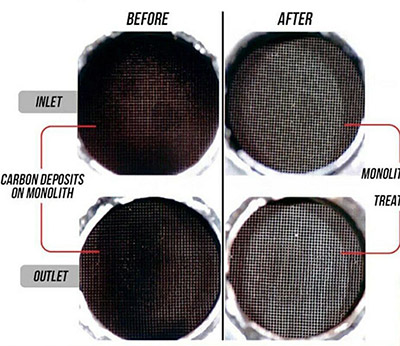
Catalytic converter cleaners can produce dramatic improvements.
How to Clean Your Catalytic Converter
There’s a cheap DIY alternative to outright replacement that’s worth a try: a catalytic converter cleaner. These products for sale on eBay are a combination of solvents and acetone.
It’s merely a matter of pouring the liquid catalytic converter cleaner into a nearly empty gas tank. Then fill up with fresh gas—and drive. Check the instructions for the amount to add. The proper amount is usually about one ounce of catalytic converter cleaner for every gallon of fuel.
It’s essential to drive for at least 15 minutes after using the cleaner. The key is for engine parts to heat up sufficiently. The cleaner removes carbon deposits and other contaminants throughout the entire fuel system.
Some cleaners come with a money-back guarantee.
If successful, the check engine light will turn off and stay off. But if you don’t resolve why the converter became dirty, the issue will probably come up again. And the check engine light will return.
Please don’t ignore that light. It’s better to fix the problem, possibly replacing the catalytic converter, before more costly repairs are required.
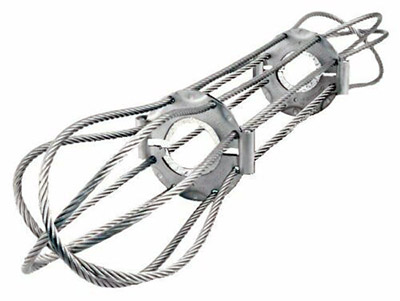
This steel cable cage wraps around a catalytic converter to make theft more difficult.
Catalytic Converter Theft
The precious metals in a catalytic converter are a target for thieves. Bad guys aren’t usually planning to use a stolen converter in another car. Instead, they sell the catalytic converter so those rare metals, such as platinum, can be extracted.
The metals are worth about $200 and $500 for each converter. Some cars are bigger targets than others. For example, the catalytic converter from a gas-electric Toyota Prius is stolen more often because a clean-running hybrid uses less of the metals. Therefore, a Prius’s catalytic converter is often worth more.
All it takes is a battery-operated reciprocating saw and two minutes to remove a catalytic converter. eBay offers many aftermarket catalytic converter cages and shields to prevent theft.

